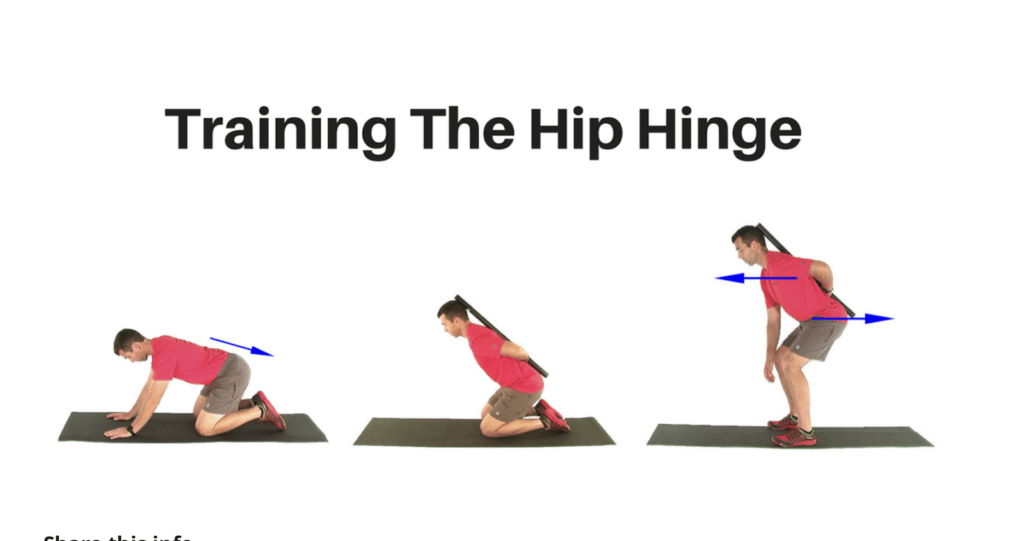With an increase in interest in kettlebell workouts in the fitness industry, there have been lots of questions surrounding the kettlebell, including what is a kettlebell swing and how to do it. Lucky for you there’s no need to keep searching! We have here a complete step-by-step guide to achieving the perfect form for a kettlebell swing.
Jump to:
First Off, What Is The Kettlebell Swing?
The kettlebell swing is a form of strength training that involves using the momentum of your body with the weight of a kettlebell to complete the exercise. This is a great addition to your workout because it not only needs limited equipment, but it works the core muscles like your glutes, hamstrings, hips abdominal muscles, shoulders, and back. And if the correct form is done, it is a fantastic full-body workout that can bring you amazing benefits both in muscle, power, and strength.
How To Properly Complete A Kettlebell Swing:
Many people believe simply swinging your hips and lifting the kettlebell is all it takes for good kettlebell swing form, however, it’s a bit more complicated than that to get the proper movement.
Step 1 — Set Up
Make sure you give yourself plenty of room for movement, meaning there should be at least four to five feet in front and two to three feet behind you of free space. If you’re doing this from home make sure all breakable items are not too close with the risk of destroying them.
Once your space is cleared, stand over your kettlebell with your feet slightly wider than hip-distance apart as if you were starting from a deadlift position. The kettlebell should be aligned evenly between your ankle bones. While keeping your back flat and your toes forward, squat with bent knees to grab the handle of the kettlebell. Remember to inhale while lifting the kettlebell weight off the ground and keep your shoulders rolled back and engage those muscles by pretending you are going to squeeze the kettlebell handle apart.
Step 2 — Load the Swing
While contracting your lats and taking a deep inhale, sweep the kettlebell back between your legs, bending your knees just enough to keep the weight in your hips. Start small and build momentum as starting off too fast or heavy can increase the risk of injury. Ensure your core and shoulders are engaged to help control momentum and prevent a curved spine.
Step 3 — Drive Your Hips
Drive the kettlebell up and forward with your hips and glutes tight while straightening your knees and bringing yourself to a rigid, upright position. Your arms should be loose to allow the kettlebell to swing upwards without resistance. When your kettlebell is at the top position (at shoulder or chin height) your body should be vertically stacked with your shoulders, knees, hips, and ankles. This is when you should focus on explosive power and a tight core the most.
Step 4 — Reload Your Swing
For your reload, allow the kettlebell weight to fall naturally, sweeping it back between your legs again without hitting any essential anatomy. You should be in a very similar position as steps one and two, meaning you’re ready to fire off another rep immediately.
Step 5 — Do It Again
And then you just repeat the steps until your set is done. Simple last that.
We said it was a little more complicated than just swinging the weight around, but we didn’t say it’d be difficult!

Additional Form Tips for Kettlebell Swings
Hips-
When you’re in the reload stage of your kettlebell swings, remember to let your hips push back, and then in step three thrust your hips forward, creating that “hip hinge” movement that is pivotal to the exercise. An increase in hip power will assist in swinging the kettlebell weight higher in the air.
Back-
A curved back means the proper muscles are not engaged which can result in some serious injuries. Your back and spine should remain straight the entire time while performing kettlebell swings to achieve the perfect kettlebell swing technique.
Legs-
It’s true the kettlebell works the glutes and hamstrings, but it’s not a squat. You should not be bending your knees to the point that you’re in a squat-like position when doing kettlebell swings. You have to bend the knees slightly to work the quads, but you’re not actually performing that full “bending” movement.
Arms-
Do not rely on your arms to do all the work. It’s the hip thrust is that swings the kettlebell up and forward, not your arm muscles.
Eyes & Chin-
It’s imperative for the proper form that you keep your eyes forward and your chin tucked as if you’re holding an apple or orange at your neck. Having wandering eyes or a chin too high can throw you out of line and affect your balance, so making sure both are where they should be will significantly help in completing proper kettlebell swings.
Hip Hinge With Broomstick
If you are struggling with the hip hinge movement, then grab a broomstick or pole that is longer than your torso. It might feel weird at first, but put the pole in a vertical position behind your back, grabbing with your hands at the level of your neck and the other at the mid to lower back with your feet shoulder-width apart. There should be three points of contact with the pole and your body; the back of the head, the shoulder blades, and the lowest part of the tailbone.
Keeping contact with all the spots and a decent grip on the pole, perform the hip hinge by pressing your hips back as your upper body tips forward from the hips. Notice how your body feels and engage your glutes and hamstrings using them to “pull” your torso back to standing and then repeat the motion over and over in front of the mirror until you can successfully copy it without the broomstick and with a weight and it stays consistently a fluid movement.
If you break contact and find yourself in a compromised position with the broomstick while performing the hip hinge you need to evaluate and adjust. Is your back rounding? Are your hips tucked too far in or pushed too far out? With the help of a mirror, trainer, or friend you can use this knowledge to fix the issue and start performing a proper hip hinge for your kettlebell swings.

The Most Common Kettlebell Swing Mistakes:
Now that you know how to perform a perfect kettlebell swing, let’s dive deeper into the common mistakes many gym-goers tend to do while attempting to do a kettlebell swing.
Overextending Your Lower Back
If you don’t engage your glutes at the top of your swing (step three), you risk letting your back take the brunt of the exercise which can cause unwanted injuries and back pain. If you’re worried that this is something you do then really focus on squeezing your glutes at the top of the swing and keeping your lats engaged as you let the kettlebell swing back down.
Using Your Arms
The kettlebell swing is not a bicep workout . If you’re doing “arm day” then likely this exercise shouldn’t be on the list. Though it is a great shoulder and back workout. A common mistake people make is thinking that they have to use more arm muscles than anything else, which is completely false. If you have to use more arm strength during the kettlebell swing workout then you’re likely not engaging your core and your back is probably not straight. To avoid the excessive use of your arms, practice a more explosive hip-hinge movement and tighten your glute muscles.
Ignoring Engaging Your Core
A lot of people ignore their core muscles during movement-type exercises, allowing them to protrude forward and making it so much more difficult to keep everything aligned. Without engaging your abdominal muscles you risk back and hip pain as well as a common condition called Diastasis Recti, which is a separation in the rectus abdominis (the six-pack ab muscles) that can cause a person’s belly to bulge.
Not Breathing Along With The Swing
It’s inevitable. Sometimes you forget to breathe properly when you’re learning a new exercise or are doing an exercise at a heavier weight. With that said, it’s one of the most important things to remember when working out to avoid cutting off oxygen and risking things like muscle cramping, dizziness, and hernias. If done properly, kettlebell swings should not cause you to faint or be in extreme pain.
Swinging the Bell Too Low
If you’re scraping against the round with your kettlebell you are far too low. A common mistake here is that people think they have to “squat” with the kettlebell swings and that is not true if you’re working towards achieving the proper form. Your knees should only be bending slightly to help with your hip thrust and the kettlebell should be nowhere near the ground when swinging.
Going Way Too Heavy And Fast
Avoiding the process of building momentum or stopping a rep in the middle can cause serious injuries. It’s very jarring to your body and makes it likely you’ll pull something. Remembering to end your kettlebell swing workout by slowly decreasing in strength until it’s safe enough to stop just like you do to get started as explained in step two is just as important as not starting off with a heavy weight. To avoid injury, start at a lighter weight and then increase after each set if you want a harder challenge without hurting yourself.
Jerky Movements
When doing a swing exercise with such explosive movement it’s easy to lose control and can make your kettlebell swings look strange and jerky. The swinging motion should be one fluid motion and you should be in a neutral position the entire time. If you’re noticing it doesn’t seem to be flowing then skip the heaviest weight and reduce injury risk by going to a lighter kettlebell and practicing the proper kettlebell swing technique even more before moving on to more advanced kettlebell exercises.
Now It’s Your Turn To Give It A Try!
There was a lot of advice here and if you’ve never done a kettlebell swing it might be overwhelming at first, but with videos like the Ultimate Full Body Kettlebell Workout for beginners and advanced by Obi Vincent.
With the at-home 15-minute Full Body Kettlebell Workout by Caroline Girvan, you’ll also be on your way to being a regular kettlebell user in no time. Just remember to keep the correct form when doing a full-body exercise during kettlebell training.
Here are Some Other Variations Of A Kettlebell Swing To Know About:
The Single-Arm Kettlebell Swing
This single-arm swing variation is done the same way as the standard two-arm swing, but instead, you only use one arm at a time. It helps build anti-rotational core strength and assists in developing unilateral shoulder stability, as well as increases grip strength since only one hand is in use. To perform the 1-armed kettlebell swing, pick a lighter weight than you normally would and hold the arm that’s not holding the weight out to the side for stability. Then perform the kettlebell swing technique as you normally would, using one arm as a single set before switching sides.

American vs. Russian Kettlebell Swing
The only difference between an American kettlebell swing vs. a Russian kettlebell swing is how high you swing the kettlebell. We explained how to do the Russian swing in this article, but the American swing is done with the kettlebell being lifted above the user’s head as the Russian one stops at the chest/chin level.
The mechanics are extremely similar, except the Russian swing engages your lats more while the American swing requires better shoulder mobility and engages your hips and glutes more. The American swing typically requires more explosiveness and power than its Russian counterpart.
There’s really no answer to which is better, but depending on your workout goals one could be more beneficial to you than the other.














